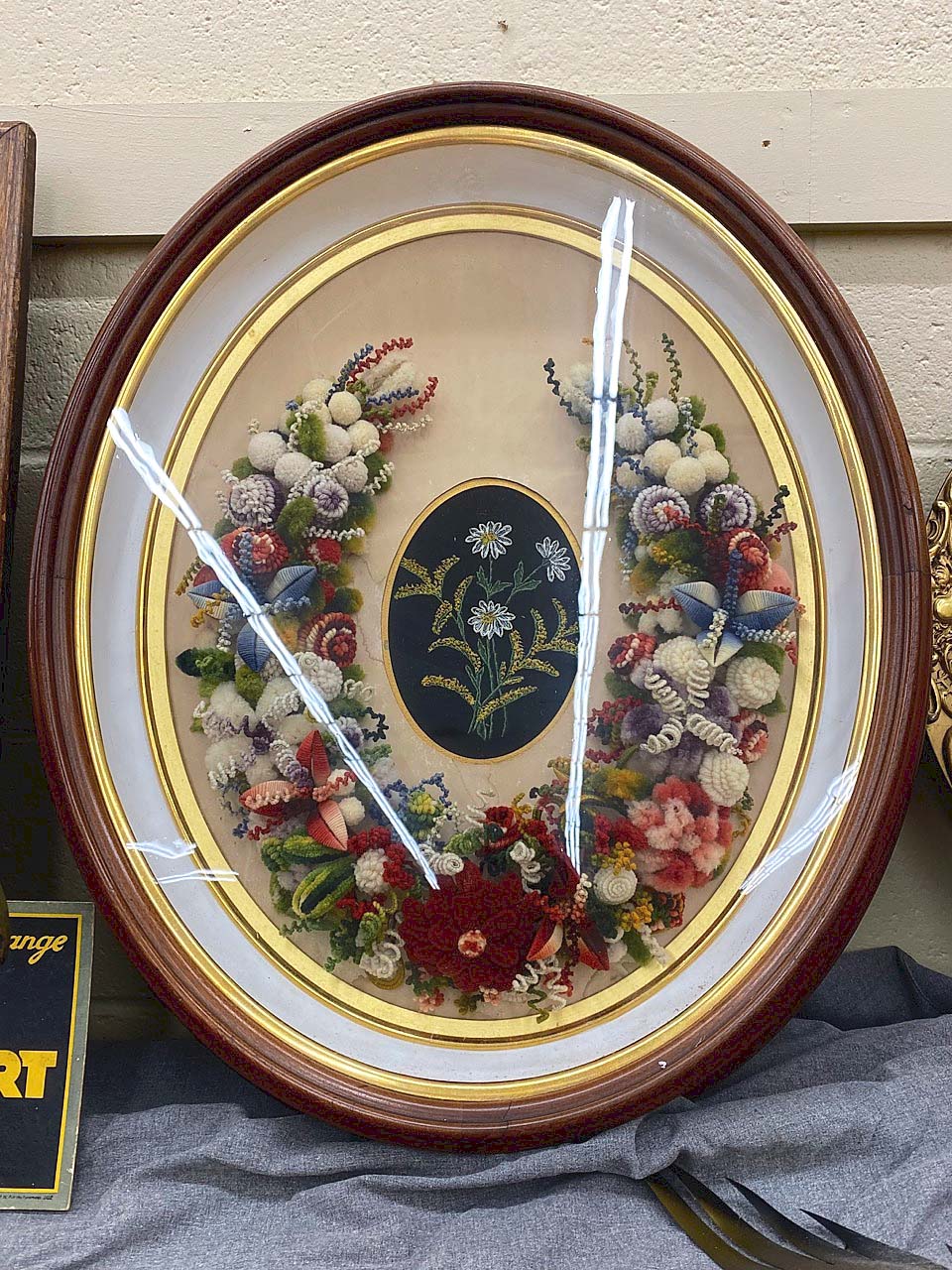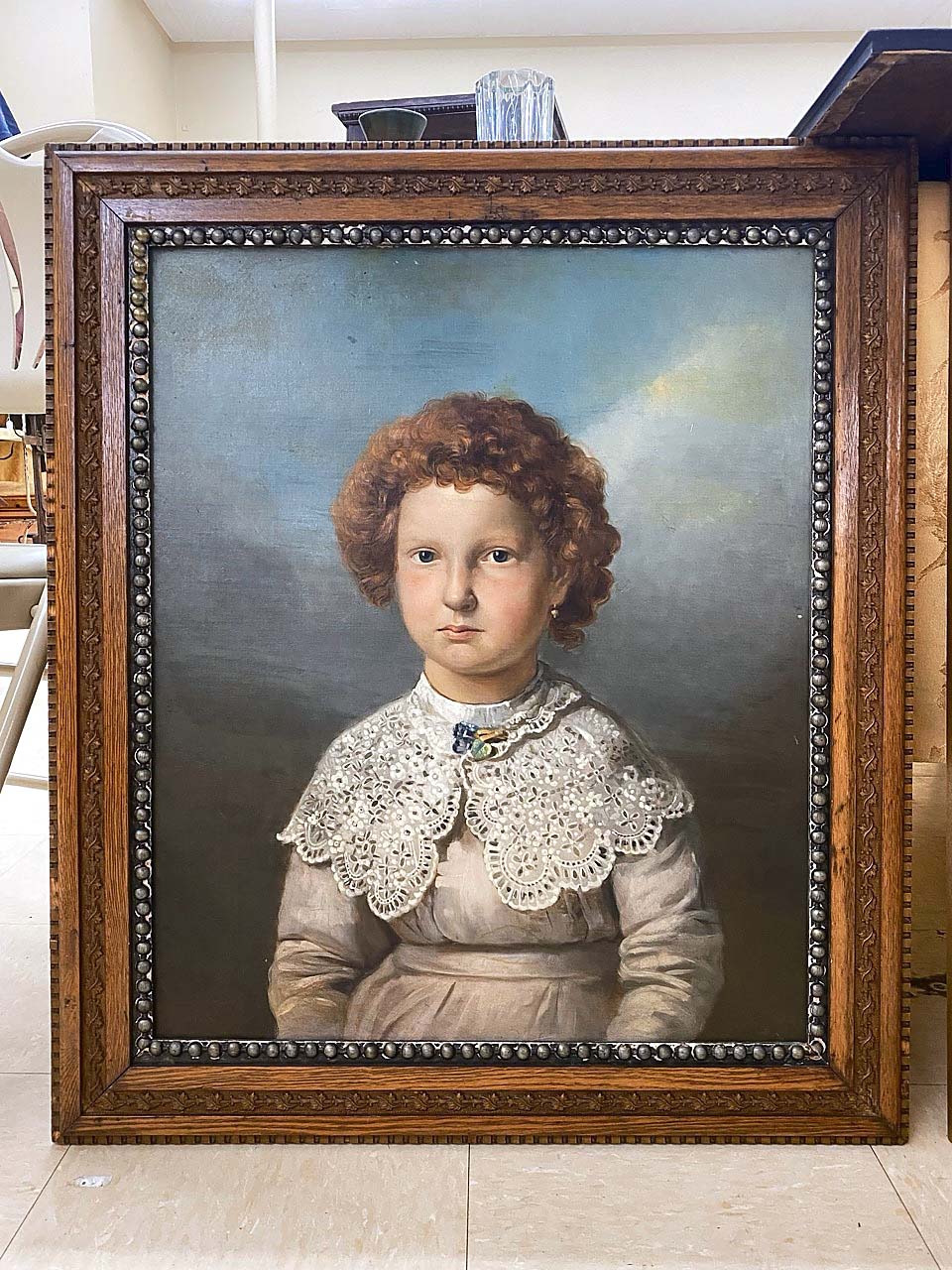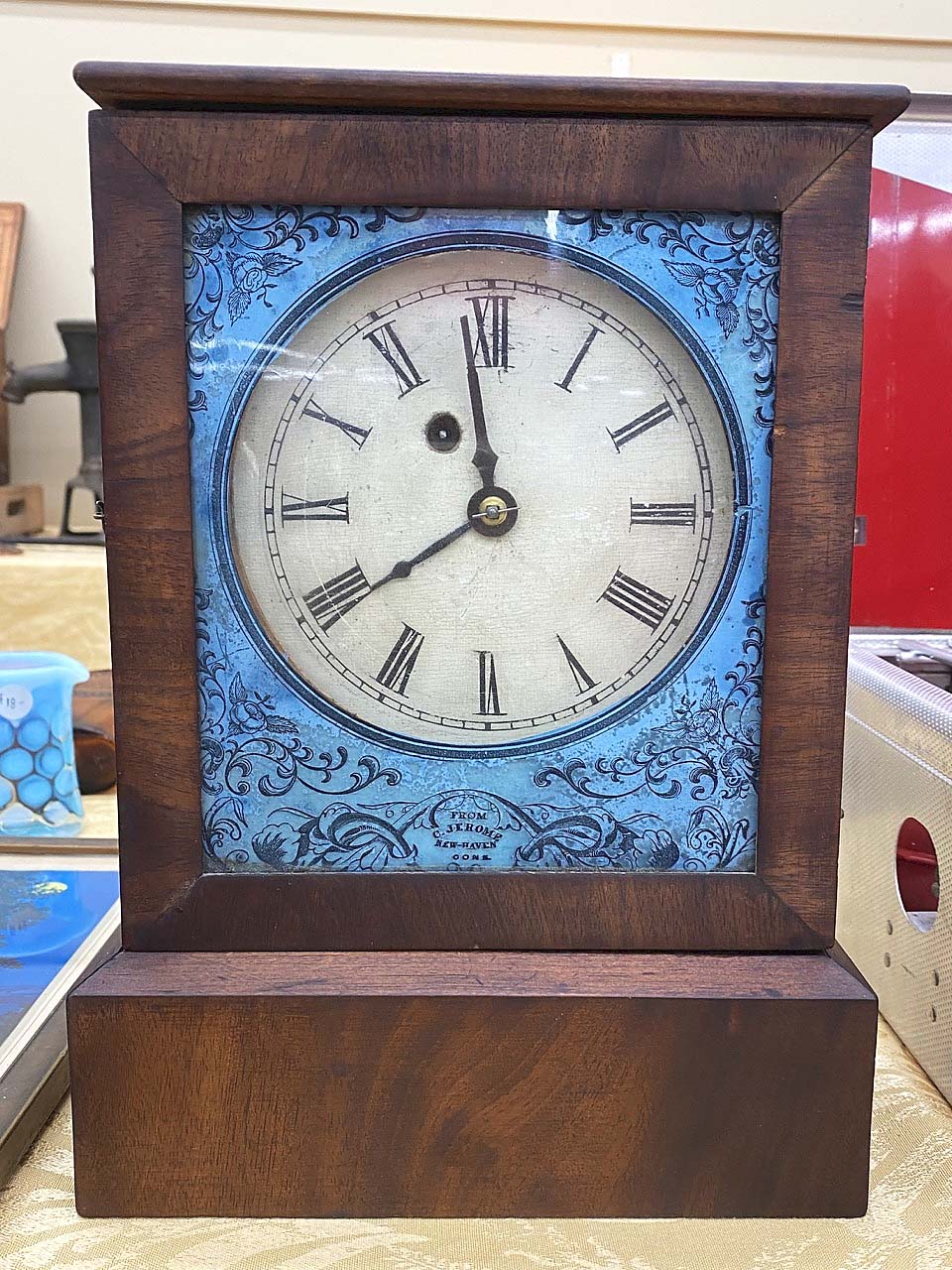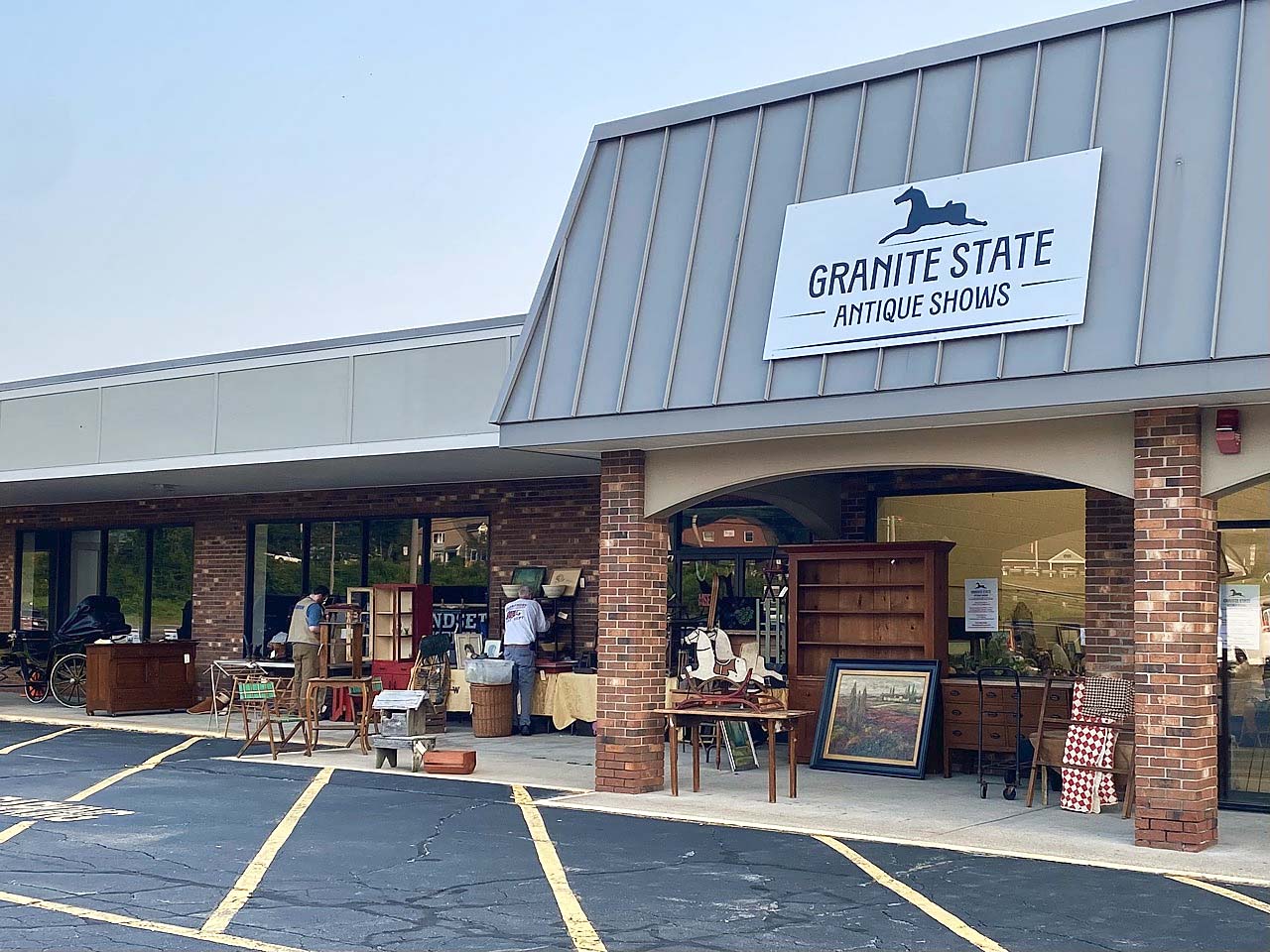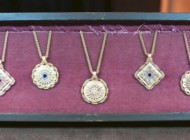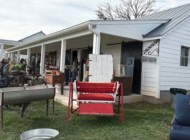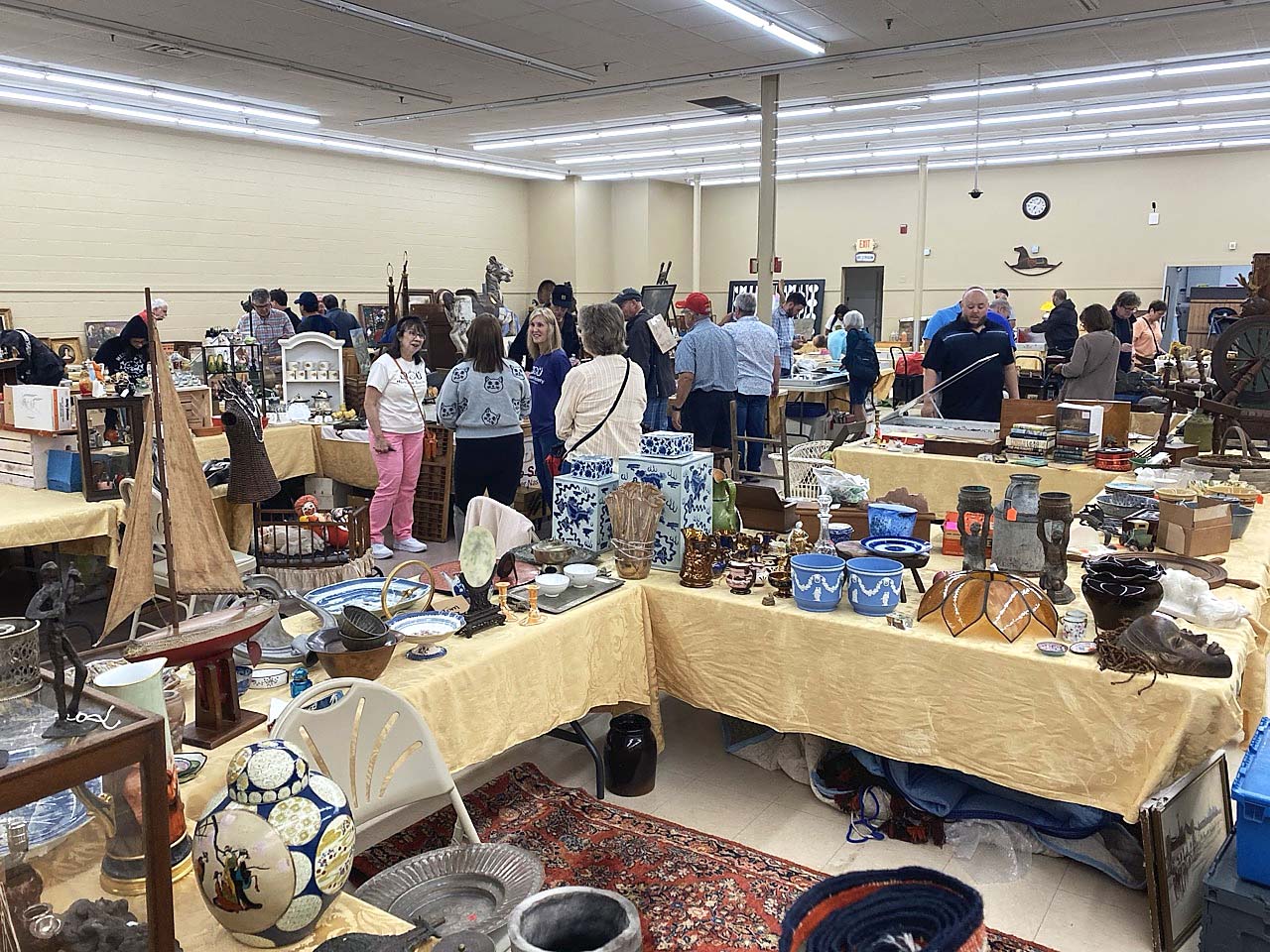
The energy during GSAS’s early buying hour was close to a feeding frenzy, and not just because of the show’s complimentary coffee and baked goods.
Review & Onsite Photos by Z.G. Burnett
MILFORD, N.H. — Granite State Antique Shows (GSAS) opened New Hampshire Antiques Week on Sunday, August 3, greeting early buyers with goods from every era, culture and price point one could imagine. The diversity of its wares was one of the show’s strengths, as is the devotion of both dealers and customers to the event’s success. Most buyers and sellers come from the New England area; even still, many are committing to a three to four-hour drive one way in order to open at 7 am sharp. The next day, showrunners Deb Lerner and Rick Martin reported an excellent turnout with lines at both early buying and general admission times.
The show has a pleasant, friendly atmosphere with veteran dealers who command an average of 30 or so years’ worth of experience in the business. One such figure is Sharon Boccelli of S.B. & Company Auctioneers, Putney, Vt., who has worked with antiques for more than four decades. The quality of stock at GSAS matched Boccelli’s expertise, including an expandable Chippendale architect’s desk from a Wolfboro, N.H., estate, which supplied most of the other pieces in her booth. When closed, the desk appeared to be a humble side table that opened and became a drafting table, then revealed a writing desk beneath, edged with exotic wood veneer. The desk hid even more surprises below the ink blotting surface: there were drawers for storing tools, stationery and anything else its owner might need. The desk’s fine design and engineering indicated that it was probably European. Boccelli had “a great show” but was still hoping to find the desk “a good home.”

S.B. & Company Auctioneers highlighted this rare Chippendale architect’s desk that boasted hidden drawers for tools and could be folded shut to fit against a wall as a side table. Putney, Vt.
Another Chippendale showstopper arrived with a Falmouth, Mass., dealer named Jim who routinely fills one of the front corner booths with fantastic finds. This event’s centerpiece was a small chest of drawers, made circa 1780-85 in Boston, with a serpentine front, distinctive ball-and-claw feet and original hardware. It may have belonged to the Russell family of revolutionary Arlington, Mass., whose descendants include actors Kurt Russell and his son, Wyatt Russell. The chest’s mahogany veneer almost glowed as Jim was immediately crowded with interested customers upon their arrival.
The Bow, N.H., father-and-son team of Mike and Alex Wheeler occupied their usual center-rear spot and presented around three centuries of home goods, some from the family’s personal collection. These included a handsome veneered mantel clock with a reverse stenciled face, bought at an Essex County, Mass., auction, that was in their home “for at least ten years.” The clock was marked by Chauncey Jerome (1793-1868) of New Haven, Conn., who made a fortune in clock production and briefly served as the city’s mayor, from 1854 to 1855. Jerome’ss main contributions to the industry were inventing the bronze looking glass clock as well as producing small, rectangular brass shelf clocks that were manufactured on a mass-production scale and sold for affordable prices. The Wheelers’ clock likely dated from 1842 to 1850, when Jerome established his operation in New Haven’s Elm City neighborhood.
Matching GSAS’s logo, Casey W. Smolla, Seabrook, N.H., displayed a wonderfully weathered Nineteenth Century carousel horse. Its condition did not detract from its appeal, as the original paint’s wear showed a long career entertaining generations of riders. The horse’s construction was also visible where the wood had shrunk and expanded over time, making it a charming acquisition for any collector who prefers patina. Smolla found it in Middleton, Mass., and the horse is still available at press time.

Casey W. Smolla, Rowley, Mass., presented this Nineteenth Century American carousel horse as he found it in Middleton, Mass.
On the other end of the condition scale, Ed Lambert of St Albans, Vt., brought a stunning woolwork mourning wreath that looked as though it had been framed yesterday instead of circa 1860-70. Made to commemorate the death of a loved one, mourning goods became popular decorative objects in the Nineteenth Century but did not always eschew color in favor of Victorian black. The small sampler of flowers in the center may have been the deceased’s work, added to the arrangement for eternity. Lambert found this example in a northern Vermont estate where it had likely belonged to the house’s original family. He believed the wreath to be “city-made” due to its quality and execution.
Swinging Bridge Auction, Huntington, Mass., showed a similarly fine portrait of a young girl, whose curly red hair and intricate lace collar drew a number of passerby’s eyes. The portrait was unsigned, and its artist’s attention to details, including each strand of the girl’s hair, translucent eyebrows, small floral brooch and tiny drop earring, were not done justice by this reporter’s photograph. Owners David and Lori Baillargeon shared that they bought the painting from a Westfield, Mass., estate that belonged to “a 90 year old woman.” They believed the subject to be one of her ancestors, but unlikely the woman herself. Lori mentioned that the little girl resembled one of her own relatives, and visitors to the booth had similar reactions.
One piece of folk art from Woburn, Mass., dealer Wayne White was more easily identified: a polychrome woodcut of the Dionne quintuplets, the first known set of five identical babies to survive infancy. Born in 1934 to an already large, rural family in Corbeil, Ontario, Canada, the “quints” soon became wards of the state. The girls were moved onto a compound called “Quintland,” where they received around-the-clock attention from an in-house staff while each stage of their childhoods was publicized to a worldwide audience. Their celebrity extended into brand representation, with their faces helping to advertise Carnation condensed milk, Quaker Oats and other products. The last quintuplet, Cécile, died recently at age 91, on July 28, 2025.
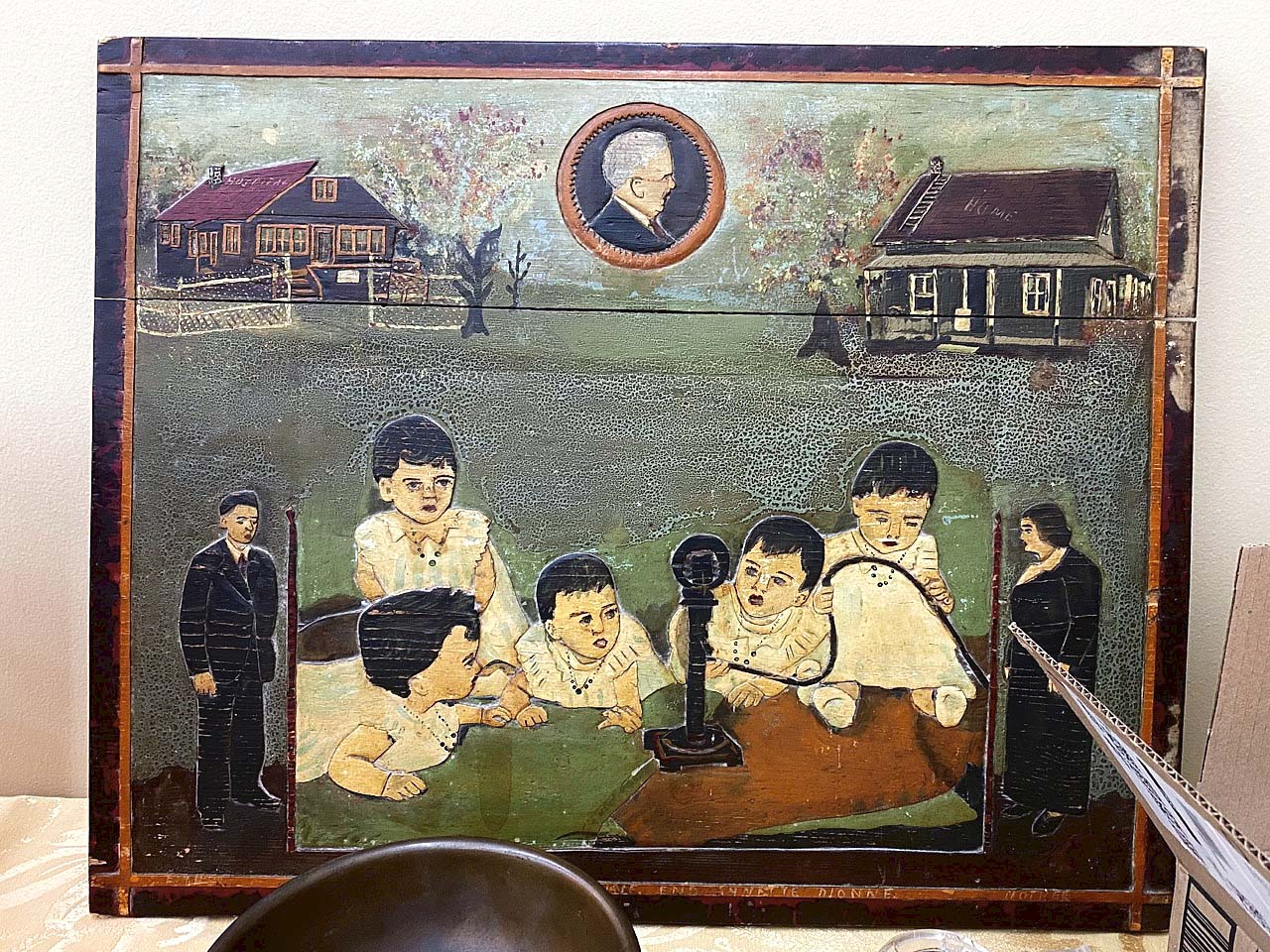
The identical Dionne quintuplets were born in 1934, the first known set of their kind to survive infancy and became a media sensation with their image used in advertisements, souvenirs and folk art, as seen here. Wayne White, Woburn, Mass.
Joy Cadarette, Concord, N.H., offered a span of goods such as a primitive hutch and a large terracotta bust of a Louis XVI-era lady — both of which sold within the first hour — and also showed a number of modern and contemporary paintings including “The Guide” by Russian artist Alexander Anufriev (1940-2024). From the “nonconformist” school, Anufriev’s work took a spiritual direction after he survived an earthquake that leveled Tashkent, Uzbekistan, defying the Soviet Union’s state-sanctioned secularity. Anufriev emigrated to the United States in 1980 and married the Chechnyan cellist Tanya Anisimova (b 1966). Her musical influence led to collaboration with Anufriev, including a 1995 multimedia live production titled “Angels on Mount San Angelo” after her own composition that included six 15-by-10-foot paintings. Cadarette’s canvas was significantly smaller and less dynamic, but Anufriev’s quiet, slightly unsettling image invited contemplation akin to that of religious icons.
Granite State Antique Shows is at Granite State Plaza, 185 Elm Street, and occurs bi-weekly. For more information, 603-506-9848 or www.granitestateantiqueshows.com.









